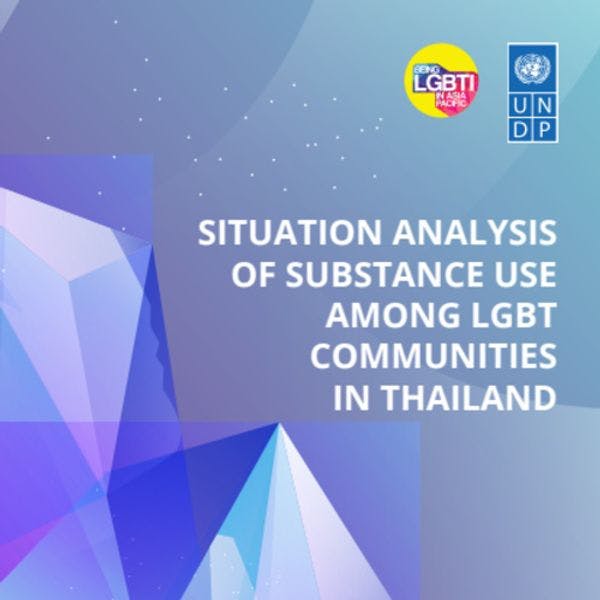Análisis de la situación del consumo de sustancias entre comunidades LGBT en Tailandia
El PNUD discute datos específicos de Tailandia sobre comportamientos de la comunidad LGBT relacionados con el consumo de sustancias que potencialmente pondrían en riesgo a personas LGBT, y brindan recomendaciones para asegurar su protección. Más información, en inglés, está disponible abajo.
Research from around the world has repeatedly confirmed that the rates of substance use among lesbian, gay, bisexual and transgender (LGBT) people are substantially higher than among their cisgender heterosexual counterparts. Many researchers and advocates have attributed these higher rates to lived experiences of stigma, discrimination, bullying, harassment and victimization, although it is probable that other pathways have led to increased substance use among LGBT people. Evidence has shown that among LGBT people, those negative lived experiences increase the likelihood of adverse conditions – such as low self-image, anxiety, depression, problematic substance use, HIV and suicide. Moreover, there are potential syndemic effects where, as the number of psychosocial conditions increases within an individual, the risk of major negative health outcomes also increases.
Despite the increasingly solid consensus established on a growing body of evidence around the interrelationships between sexual orientation and gender identity and expression (SOGIE), substance use, stigma and discrimination, and negative health and psychosocial outcomes, there are limited relevant data that unpack this complex dynamic in Asian contexts, including in Thailand. This report therefore seeks to summarize currently available Thailand-specific data in order to provide an in-depth review of the substance use–related behaviours that could potentially put LGBT people at risk. The report summarizes information found in academic peer-reviewed studies, in the monitoring and evaluation (M&E) systems managed by civil society organizations (CSOs), and the 1,179 responses from individuals who self-identified as LGBT in a nationwide survey conducted by the United Nations Development Programme (UNDP) office in Thailand.
The data presented in the report show that LGBT people use a variety of substances, for a wide range of reasons, in different ways and in different contexts, leading to different levels of exposure to an array of different risks. This means that interventions and strategies need to be tailored to each population segment and even to different subsegments within each community, according to each specific risk profile, in order to respond effectively to their needs. For example, some gay men who use illicit drugs may do so to cope with stress and anxiety that result from SOGIE-based discrimination, while other gay men may be using the exact same substances purely to improve their sexual experiences.
